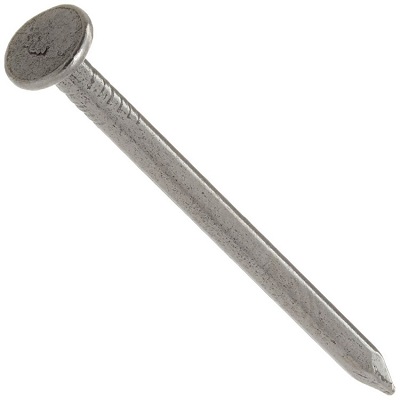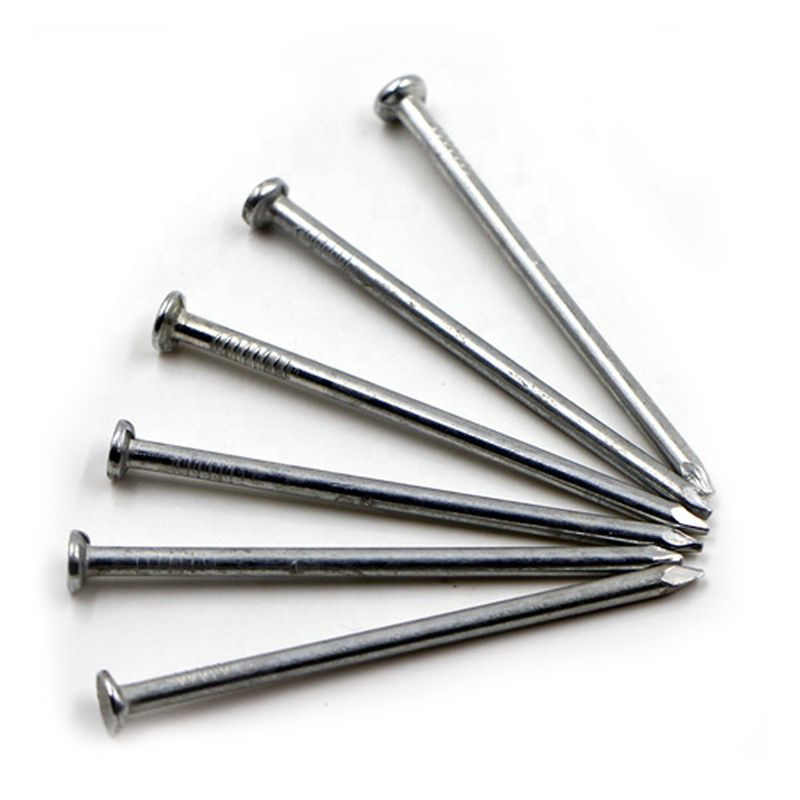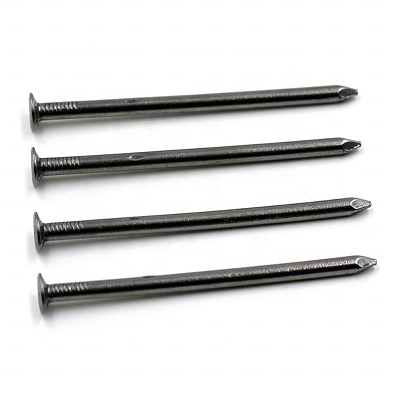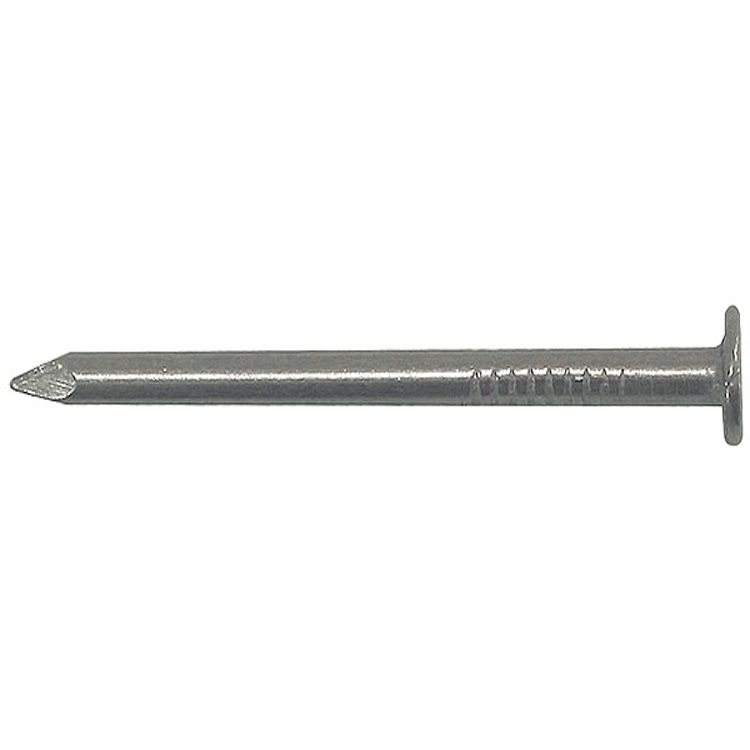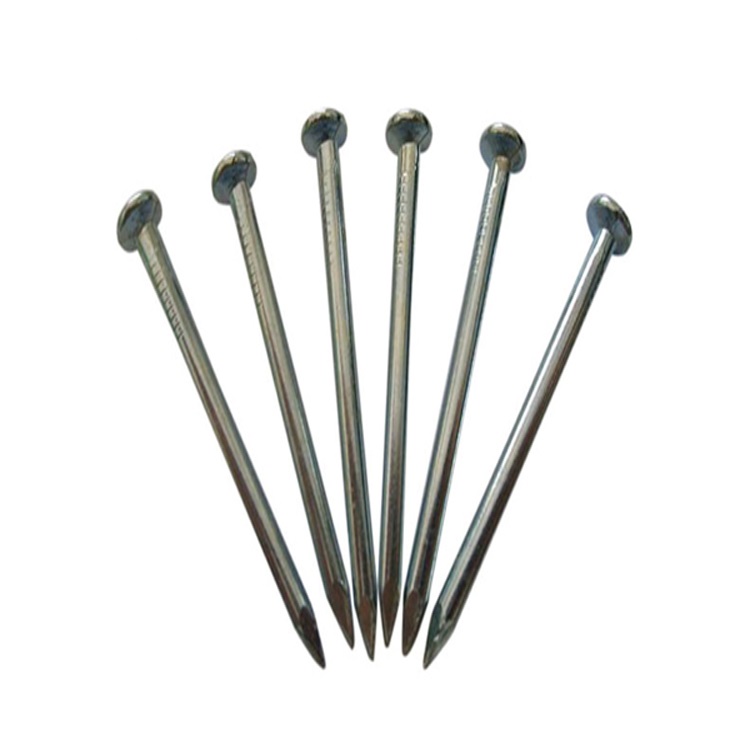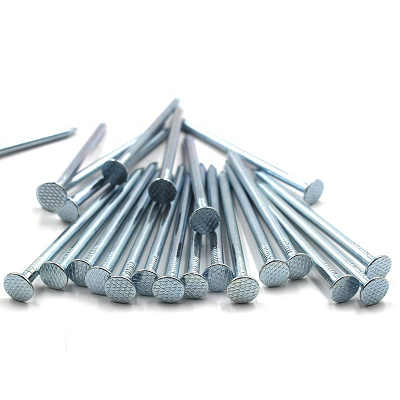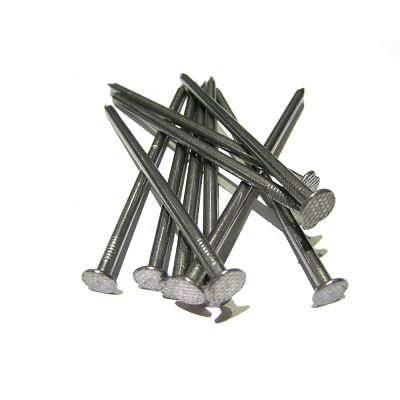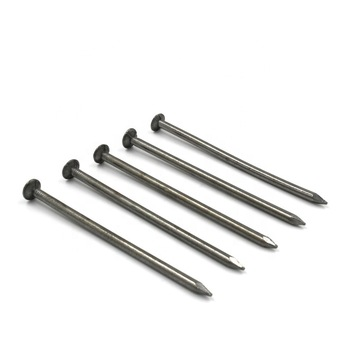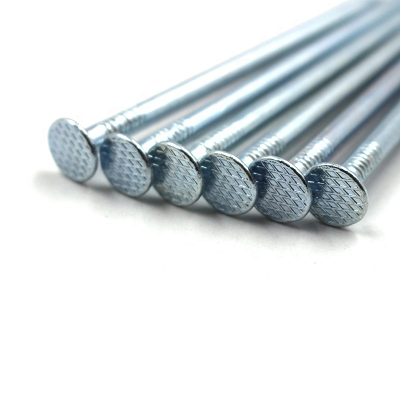Short Description:
3 inch common nails
3 inch Common nails have a thick shank and are made from iron wire. These nails range from 4 to 14 inches in length and 2d to 60d in size. The “d” comes from the symbol for the monetary penny and is a measure of the size of nails. Each 1d increase equals a 1/4-inch increase in length up to 12d. A 16d nail, however, is 1/4 inch longer than a 12d nail. Starting with 20d, the nail lengths go up 1/2 inch with each many of 10.
Common Nail Specification:
| Size of Nails ( Length) | Length (MM) | Shank Diameter(MM) |
| 3/4″ | 20 mm | 1.4 mm |
| 4/5″ | 22 mm | 1.2 mm |
| 1″ | 25 mm | 1.6 mm |
| 1 1/4″ | 30 mm | 1.8 mm |
| 1 1/2″ | 40 mm | 2.2 mm |
| 2″ | 50 mm | 2.5 mm |
| 2 1/2″ | 60 mm | 2.8 mm |
| 3″ | 70 mm | 3.1 mm |
| 3 1/4″ | 80 mm | 3.4 mm |
| 3 1/2″ | 90 mm | 3.7 mm |
| 4″ | 100 mm | 4.1 mm |
| 5″ | 130 mm | 4.5 mm |
Uses:
Most people use ordinary nails for medium to heavy construction work. With thick nail heads, nails can be driven into hard materials. Some examples include thin metal plates, wood, and thin aluminum. Use ordinary nails on items such as fences, roofs, and decks.
Feature:
Common nails are strong and hard, and the diameter of their shank is larger than other nails. Two common nails have a notch near the head of the nail. These notches can make nails better fixed. Some will have screw-like threads on the top of the nail head to provide additional retention.
Craft:
Ordinary nails can be used for craft projects. Hammer an ordinary nail into a piece of wood so that the nail head protrudes about an inch or two from the wood. Use a micro paintbrush and acrylic paint to draw a pattern on the end of the nail. Make a picture by driving a few nails into the wood. For example, shape your nails into a bunch of flowers, and paint each nail head into the shape of a flower.

